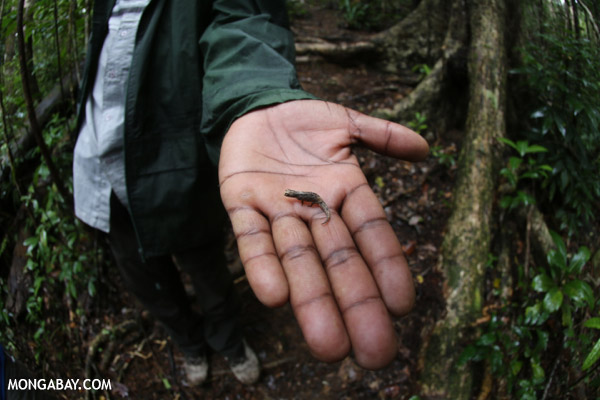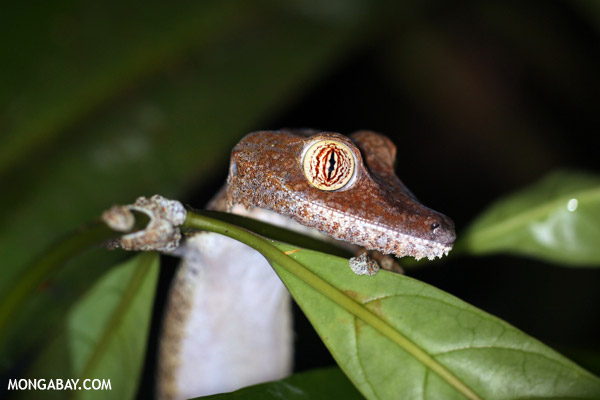While Madagascar is famous for its incredible diversity of plants and animals, a new study suggests that the island’s rate of speciation has slowed to a crawl.
The research, published last week in the Proceedings of the Royal Society B by Daniel Scantlebury of the University of Rochester, is based on analysis of evolutionary records of seven groups of reptiles and amphibians. It finds a decrease in the rate of new species formation since Madagascar split from the super-continent Gondwana some 90 million years ago.
Madagascar’s isolation provided opportunities for adaptive radiation into its wide range of ecological niches. For example, the California-sized island has more than 100 species of lemurs — a number of primates far greater than any other country. It has half the world’s chameleon species and dozens of geckos. Although the island represents only one percent of the earth’s land area, it is home to roughly three percent of its species.

Brookesia chameleon in Madagascar

Panther chameleon
But the principle of adaptive radiation holds that speciation rates will eventually slow as vacant niches are filled by species. The new research suggests that Madagascar may have already reached that point, with new species taking longer to emerge.
“A staggering number of species are found only on Madagascar, but this research shows there are limits to the number of species the island can sustain, and Madagascar may currently be at those limits,” said Scantlebury, a Ph.D. student in biology, in a statement. “Some of the earlier research showed an early burst of diversification among groups located in rainforests, supporting the principles of adaptive radiation. My study took the next step by looking at subsequent declines.”

A tree diagram of the Brookesia chameleons on Madagascar shows a decline in the rate of species formation within the clade. The horizontal lines represent individual species, with the lengths of the lines showing relative time. The nodes depict the points at which new species are formed. The relatively few nodes at the right of the diagram, as we approach the present day, illustrate a decline in species diversification. (Graphic by Daniel Scantlebury.)
The results may catch some by surprise given the spate of “new species” described in Madagascar in recent decades — the number of known lemur species has more than doubled over the past twenty years alone. But the rate of species descriptions by scientists do not reflect the rate of new species formation. Instead it reflects investment in scientific research, genetic analysis, and taxonomy. In fact, ecologists are concerned that Madagascar’s plant and animals are already in decline due to large-scale deforestation, habitat degradation, and unsustainable exploitation. There is real danger that the island’s biodiversity is being lost before scientists can fully document it.

Uroplatus gecko in Madagascar
Some examples of Madagascar’s animal diversity
More at WildMadagascar.org
CITATION: Daniel Scantlebury (2013). Diversification rates have declined in the Malagasy herpetofauna. Proceedings of the Royal Society B doi: 10.1098/rspb.2013.1109.
Related articles






















